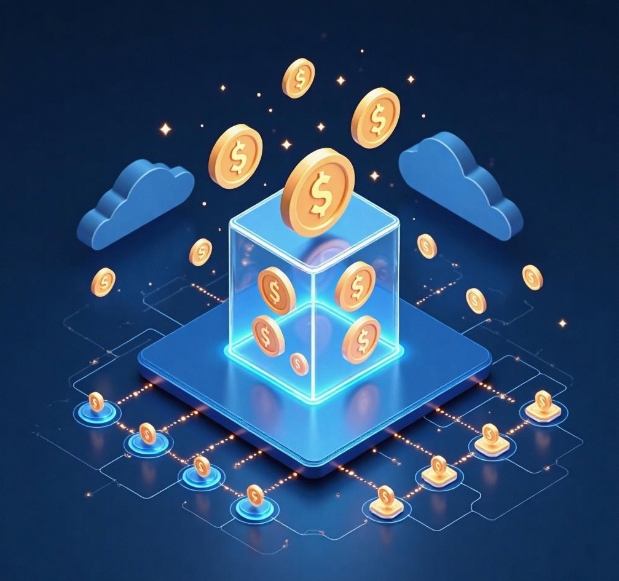Exploring the DAO Governance Model for Web3 Points Mall
- latest articles
- 1.DApp Development & Customization: Merging Diverse Market Needs with User Experience 2.Analysis of the Core Technical System in DApp Project Development 3.How to achieve cross-chain interoperability in Web3 projects? 4.How does the tokenization of points reconstruct the e-commerce ecosystem? 5.How to Set and Track Data Metrics for a Points Mall? 6.What is DApp Development? Core Concepts and Technical Analysis 7.Inventory of commonly used Web3 development tools and usage tips 8.Development of a Distribution System Integrated with Social E-commerce 9.Six Key Steps for Businesses to Build a Points Mall System 10.What is DApp Development? A Comprehensive Guide from Concept to Implementation
- Popular Articles
- 1.Future Trends and Technology Predictions for APP Development in 2025 2.Analysis of the DeFi Ecosystem: How Developers Can Participate in Decentralized Finance Innovation 3.From Zero to One: How PI Mall Revolutionizes the Traditional E-commerce Model 4.DAPP Development | Best Practices for Professional Customization and Rapid Launch 5.Recommended by the Web3 developer community: the most noteworthy forums and resources 6.How to Develop a Successful Douyin Mini Program: Technical Architecture and Best Practices 7.From Cloud Computing to Computing Power Leasing: Building a Flexible and Scalable Computing Resource Platform 8.Shared Bike System APP: The Convenient Choice in the Era of Smart Travel 9.How to Create a Successful Dating App: From Needs Analysis to User Experience Design 10.From Design to Development: The Complete Process of Bringing an APP Idea to Life
The rapid development of Web3 technology is reshaping the structure and applications of the internet. As a key component of Web3, Decentralized Autonomous Organizations (DAOs) have emerged as a new governance model, demonstrating significant potential, especially in blockchain applications and the crypto economy. In this context, the DAO governance model for Web3 points-based marketplaces is gradually becoming a novel business model, redefining user interaction, merchant operations, and community governance through decentralization. This article will start with the basic concepts of DAOs, explore their application and significance in Web3 points-based marketplaces, and analyze the advantages and challenges brought by this model.
I. Overview of Web3 and DAOs
1.1 Core Features of Web3
Web3, also known as the decentralized web, represents the next stage of internet development, aiming to transfer control from centralized companies to users through blockchain technology. In the architecture of Web3, concepts such as decentralization, data privacy, and smart contracts form its core characteristics. In Web3, users are not only consumers of information but also producers and owners of information through blockchain technology. Compared to the Web2 era, where large corporations monopolized data and traffic, Web3 seeks to reconstruct the decentralized model of the internet, emphasizing user control over personal data and innovative applications like decentralized finance (DeFi) and decentralized applications (DApps).
1.2 Concept and Characteristics of DAOs
A DAO (Decentralized Autonomous Organization) is an organizational form that achieves autonomy through smart contracts, typically without a central leader or manager in the traditional sense. The core of a DAO is to realize a transparent, open, and automated decision-making process via blockchain technology. Members of a DAO usually participate in decision-making by holding tokens, and token holders can vote based on the quantity they hold and the decision-making rules, thereby collectively managing and operating the organization.
The characteristics of DAOs include:
Decentralization: There is no single controller; all decisions are made through collective participation by members.
Autonomy: Automated operations and management are achieved through smart contracts, reducing human intervention.
Transparency: All decision-making processes and fund flows can be publicly viewed on the blockchain, ensuring transparency of information.
II. Composition and Functions of Web3 Points-Based Marketplaces
2.1 Basic Concept of Web3 Points-Based Marketplaces
A Web3 points-based marketplace is a points redemption platform built on blockchain technology. Users can accumulate points by participating in various activities, purchasing goods, completing tasks, etc., and redeem various products or services in the marketplace. Unlike traditional points-based marketplaces, Web3 points-based marketplaces leverage blockchain technology to achieve traceability, immutability, and cross-platform circulation of points, providing users with more freedom and convenience.
In a Web3 points-based marketplace, points are no longer mere numbers but liquid assets. Users can not only redeem goods within the marketplace but also trade points with other crypto assets through platforms like decentralized exchanges (DEX), thereby increasing the value and usage scenarios of points.
2.2 Advantages of Web3 Points-Based Marketplaces
Decentralized Management: Web3 points-based marketplaces achieve decentralized management through blockchain technology, no longer dominated by a single enterprise or platform. Users can collectively decide the operational rules of the marketplace within a decentralized community.
Asset Liquidity: Points in Web3 points-based marketplaces can circulate across multiple platforms. Users can not only spend points within the marketplace but also convert them into other digital assets or currencies, achieving asset appreciation.
Transparency and Fairness: The transparency of the blockchain ensures the fair distribution and use of points. All transaction records and point allocation processes can be viewed on-chain, preventing human manipulation and data tampering.
III. Application of DAO Governance Model in Web3 Points-Based Marketplaces
3.1 Basic Principles of the DAO Governance Model
The DAO governance model primarily relies on decentralized decision-making mechanisms and the automated execution of smart contracts. Under the DAO governance model, decisions are made through collective voting by members holding DAO tokens, rather than being controlled by a single manager or organization. This model ensures that every participant can equally participate in governance, with the process being open and transparent.
In Web3 points-based marketplaces, the application of the DAO governance model is mainly reflected in the following aspects:
Formulation and Modification of Marketplace Rules: All rules of the Web3 points-based marketplace (such as point acquisition methods, product redemption ratios, activity rewards, etc.) can be decided through DAO. Marketplace users can participate in voting by holding tokens to decide key operational matters.
Design of Community Activities and Reward Mechanisms: DAO members can collectively design and optimize activity mechanisms within the marketplace, such as how points are distributed and which products are available for redemption. The voting mechanism ensures that the needs and interests of every user are fully represented.
Management and Allocation of Funds: The management of funds and resources in Web3 points-based marketplaces can also be decided by the DAO. For example, how marketplace revenue is distributed, whether to conduct market promotions, or whether to add new partners can all be decided through DAO voting, ensuring transparency and rationality in fund usage.
3.2 Specific Implementation of the DAO Governance Model
The specific implementation of the DAO governance model relies on smart contracts and blockchain platforms. The DAO governance in Web3 points-based marketplaces typically consists of the following core components:
DAO Tokens: DAO tokens are the foundation for participating in governance. Marketplace users obtain the right to participate in governance by holding tokens, and the quantity and holding duration of tokens usually determine the weight of their votes.
Smart Contracts: Smart contracts play a crucial role in DAO governance. Through smart contracts, processes such as voting, decision-making, and resource allocation can be automatically executed, ensuring transparency and fairness in the governance process.
Voting Mechanism: The voting mechanism in DAOs is typically based on token holdings, where users gain voting rights according to the quantity and duration of their token holdings. Voting results are automatically executed via smart contracts, ensuring automated and decentralized decision-making.
3.3 Advantages and Challenges of the DAO Governance Model
Advantages
Decentralization and Democratic Decision-Making: The DAO governance model eliminates the concentration of power in a single manager, making marketplace operations and decision-making more democratic. Every user's opinion can be expressed through voting, ensuring community members' sense of participation and the transparency of decisions.
Balance of Incentives and Constraints: The DAO governance model closely links marketplace operations with user interests through the token mechanism. Users gain governance rights by holding tokens, and the value of tokens is directly tied to the marketplace's operational outcomes, thereby incentivizing active participation in governance.
Flexibility and Innovation: Through DAO governance, Web3 points-based marketplaces can flexibly adjust and innovate based on community members' needs. For example, the marketplace can quickly adjust point redemption ratios, add new redemption products or activities, and enhance user participation and activity levels.
Challenges
Decision-Making Efficiency Issues: Although the DAO governance model is democratic, it may face efficiency issues in complex decision-making processes. Especially when there are many participants, reaching a decision may take a long time.
Risk of Voting Power Abuse: In DAO governance, the amount of tokens held determines the voting power, which may lead to a few large holders monopolizing voting rights and affecting the fairness of decisions. Therefore, designing an appropriate voting mechanism to avoid power concentration is a significant challenge.
Technical and Security Risks: DAOs rely on smart contracts and blockchain technology, and technical vulnerabilities or security risks may lead to system attacks or fund losses. Therefore, ensuring the security of the technology and the correct execution of smart contracts is a challenge faced by the DAO governance model.
IV. Conclusion
The DAO governance model for Web3 points-based marketplaces, as a new business model, is gradually demonstrating its unique advantages and potential. Through decentralized governance mechanisms, DAOs not only enhance user participation but also ensure the transparent, fair, and efficient execution of marketplace rules. However, the DAO governance model also faces challenges such as low decision-making efficiency and power concentration, which need to be addressed through technological innovation and rational mechanism design. With the continuous development and improvement of blockchain technology, the DAO governance model for Web3 points-based marketplaces will play an increasingly important role in the future digital economy, bringing a more flexible, fair, and efficient business ecosystem to users, merchants, and platforms.
-

How does the tokenization of points reconstruct the e-commerce ecosystem?
With the continuous advancement of internet technology and the gradual prolifera···
-

How to Set and Track Data Metrics for a Points Mall?
With the rapid development of the e-commerce industry, points malls, as a common···
-

Development of a Distribution System Integrated with Social E-commerce
With the rapid development of internet technology, the e-commerce industry has e···

 Blockchain
Blockchain












